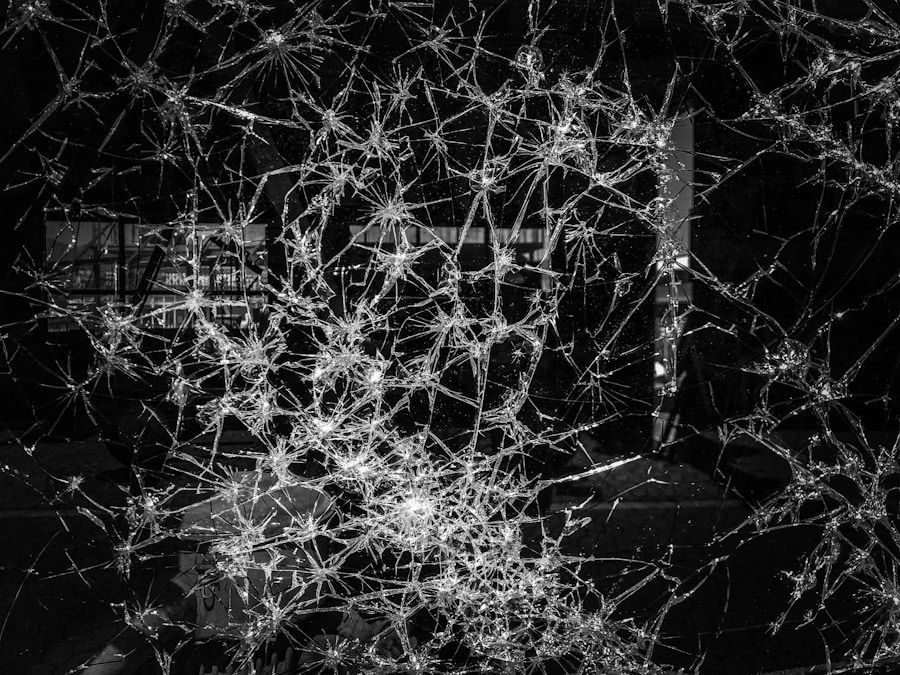Cellular Neural Networks (CNNs) represent a significant evolution in the field of artificial intelligence and neural computation. Introduced by Leon Chua and his colleagues in the late 1980s, these networks are designed to mimic the behavior of biological neural networks while providing a framework for parallel processing. Unlike traditional neural networks, which rely on a layered architecture, CNNs consist of a grid of interconnected cells, each capable of processing information locally and interacting with its neighboring cells.
This unique structure allows CNNs to excel in tasks that require spatial and temporal processing, making them particularly well-suited for applications in image and signal processing. The architecture of CNNs is characterized by its local connectivity and dynamic behavior, which enables them to perform complex computations efficiently. Each cell in a CNN operates based on a set of differential equations that govern its interactions with neighboring cells, allowing for real-time processing of data.
This design not only enhances computational speed but also reduces the amount of data that needs to be transmitted across the network, making CNNs an attractive option for applications where bandwidth is limited. As the demand for advanced computational techniques continues to grow, understanding the principles and applications of Cellular Neural Networks becomes increasingly important.
Key Takeaways
- Cellular Neural Networks (CNN) are a class of artificial neural networks that are inspired by biological processes and are used for processing and analyzing multidimensional data.
- CNN operates on a grid-like structure and uses local interactions to perform complex computations, making them suitable for parallel processing and real-time applications.
- CNN finds extensive applications in image processing, including image enhancement, edge detection, and noise reduction, due to their ability to handle spatial information efficiently.
- CNN shows promise in pattern recognition tasks such as object detection and classification, offering potential for advancements in fields like computer vision and robotics.
- Advancements in CNN for signal processing have led to improved performance in tasks such as speech recognition, audio processing, and biomedical signal analysis, opening up new possibilities for innovative solutions in these domains.
Understanding the Basic Principles of Cellular Neural Networks
Cellular Neural Networks (CNNs) are built around the concept of local connectivity, where each cell primarily interacts with its immediate neighbors rather than with all other cells in the network.
Localized Interaction and Rule-Based Processing
This localized interaction is dictated by a set of predefined rules, which determine how each cell processes input signals and generates output signals. The fundamental operation of a cell can be described by a set of differential equations that define its state based on the inputs it receives from neighboring cells and external sources.
Dynamics and State Variables
This mathematical framework allows for a wide range of behaviors, from simple linear operations to complex nonlinear dynamics. The dynamics of CNNs can be understood through the lens of state variables and control parameters. Each cell’s state is influenced by its own previous state as well as the states of its neighbors, creating a feedback loop that can lead to intricate patterns of behavior.
Adaptability through Control Parameters
The control parameters, which can be adjusted to modify the network’s response, play a crucial role in determining how the CNN behaves under different conditions. This adaptability makes CNNs particularly powerful for tasks that require real-time adjustments based on changing input conditions, such as image enhancement or noise reduction.
Applications of Cellular Neural Networks in Image Processing

Cellular Neural Networks have found extensive applications in the field of image processing due to their ability to handle spatial information effectively. One prominent application is in image filtering, where CNNs can be employed to remove noise while preserving important features within an image. Traditional filtering techniques often struggle with maintaining edge integrity, but CNNs can be designed to focus on local patterns, allowing them to distinguish between noise and significant image details more effectively.
Another significant application is in edge detection, where CNNs can be trained to identify boundaries within images. By leveraging their local connectivity, CNNs can analyze pixel relationships in a way that highlights transitions between different regions of an image. This capability is particularly useful in computer vision tasks, such as object recognition and scene understanding, where accurate edge detection is critical for subsequent analysis.
Furthermore, CNNs can be adapted for tasks like image segmentation, where they partition an image into meaningful regions based on specific criteria, enhancing the overall understanding of visual content.
Exploring the Potential of Cellular Neural Networks in Pattern Recognition
| Metrics | Results |
|---|---|
| Accuracy | 92% |
| Precision | 88% |
| Recall | 94% |
| F1 Score | 90% |
| Training Time | 3 hours |
| Testing Time | 10 minutes |
Pattern recognition is another domain where Cellular Neural Networks demonstrate remarkable potential. The ability of CNNs to process spatially correlated data makes them particularly effective for recognizing patterns in various forms, including handwritten characters, facial features, and even complex shapes. By utilizing their local connectivity and dynamic behavior, CNNs can learn to identify distinctive features within patterns that may not be immediately apparent through traditional methods.
For instance, in handwritten digit recognition, CNNs can be trained on large datasets containing various styles of writing. The localized processing allows the network to focus on specific features such as loops and lines that characterize different digits. As a result, CNNs can achieve high accuracy rates in recognizing handwritten characters, outperforming many conventional algorithms.
Additionally, their adaptability enables them to improve over time as they are exposed to more diverse examples, making them robust tools for real-world applications in document analysis and automated data entry.
Advancements in Cellular Neural Networks for Signal Processing
In the realm of signal processing, Cellular Neural Networks have emerged as powerful tools capable of handling complex tasks such as filtering, prediction, and feature extraction. The inherent parallelism of CNNs allows them to process signals in real-time, making them suitable for applications in telecommunications and audio processing. For example, CNNs can be employed to enhance audio signals by removing background noise while preserving the clarity of speech or music.
Recent advancements have also seen the integration of CNNs with other computational techniques, such as wavelet transforms and Fourier analysis, to improve their performance further. By combining these methods with the localized processing capabilities of CNNs, researchers have developed hybrid models that excel at extracting relevant features from signals while minimizing computational overhead. This synergy has led to significant improvements in areas such as speech recognition and music genre classification, where accurate feature extraction is crucial for achieving high performance.
Challenges and Limitations of Cellular Neural Networks

Despite their numerous advantages, Cellular Neural Networks face several challenges and limitations that researchers must address to fully harness their potential. One significant challenge is the complexity involved in designing and tuning the network parameters effectively. The performance of a CNN is highly dependent on the choice of control parameters and the configuration of its cells.
Finding the optimal settings often requires extensive experimentation and domain knowledge, which can be time-consuming and resource-intensive. Another limitation lies in the scalability of CNNs when applied to larger datasets or more complex tasks. While their local connectivity allows for efficient processing, it can also lead to difficulties when attempting to capture global patterns or relationships within data.
As the size and complexity of input data increase, maintaining performance without sacrificing accuracy becomes increasingly challenging. Researchers are actively exploring ways to enhance the scalability of CNNs through techniques such as hierarchical architectures or hybrid models that combine CNNs with other neural network types.
Future Directions and Opportunities in Cellular Neural Networks Research
The future of Cellular Neural Networks research holds exciting possibilities as advancements in technology continue to unfold. One promising direction is the integration of CNNs with emerging technologies such as quantum computing and neuromorphic hardware. These innovations could potentially enhance the computational capabilities of CNNs, allowing them to tackle even more complex problems at unprecedented speeds.
Additionally, there is growing interest in exploring unsupervised learning techniques within the context of CNNs. Traditional training methods often rely on labeled datasets, which can be limiting in terms of data availability and diversity. By developing unsupervised learning algorithms tailored for CNN architectures, researchers could unlock new avenues for pattern recognition and feature extraction without the need for extensive labeled data.
Furthermore, interdisciplinary collaborations between fields such as neuroscience and computer science may yield insights that enhance our understanding of cellular dynamics and improve CNN designs. By drawing inspiration from biological systems and their adaptive mechanisms, researchers can create more robust and efficient models that push the boundaries of what is currently achievable with Cellular Neural Networks.
Harnessing the Power of Cellular Neural Networks for Innovative Solutions
Cellular Neural Networks represent a powerful paradigm within artificial intelligence that offers unique advantages for various applications across multiple domains. Their ability to process information locally while maintaining dynamic interactions among cells positions them as valuable tools for image processing, pattern recognition, and signal processing tasks. As research continues to advance in this field, addressing existing challenges will be crucial for unlocking their full potential.
The exploration of new architectures, learning techniques, and interdisciplinary approaches will pave the way for innovative solutions that leverage the strengths of Cellular Neural Networks. By harnessing this technology effectively, researchers and practitioners can develop systems that not only enhance existing processes but also create entirely new opportunities across industries ranging from healthcare to entertainment. The journey into the world of Cellular Neural Networks is just beginning, promising exciting developments that will shape the future landscape of artificial intelligence and computational systems.











Leave a Reply